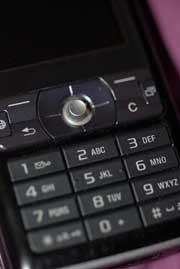
Traditional cell phones have been immune to viruses because they lack standardized operating systems. However, as smart phones rapidly increase in market share, viruses pose a serious threat to mobile communications.
A new study in the journal Science that is coauthored by University of Notre Dame physics doctoral student Pu Wang and researchers from Northeastern University suggests that the risk of mobile phone virus attacks will increase as a few operating systems gain more market share. The study also analyzes the pattern and speed of the spread of infection for Bluetooth and multimedia messaging services (MMS). The researchers used anonymous billing records of 6.2 million mobile subscribers and tracked calling patterns using the location of the closest mobile phone tower.
Smart phones, which can share programs and data, could attract virus writers at a level more disruptive than computer viruses. Mobile viruses can be spread by either Bluetooth or MMS communications protocols. Bluetooth viruses can infect phones with the technology within a local area, comparable to the spread of contact-based disease. The infected phone must be moved into another tower’s range in order to infect a new set of phones. The slow spread provides time to develop protection from the virus.
MMS viruses, like computer viruses, can send copies to everyone in the infected phone’s address book and copy themselves into a new handset in about two minutes, but the underlying call network is so fragmented that viruses can access only a fraction of susceptible phones. Since 2005, virus writers have developed hybrids that spread with both Bluetooth and MMS connections.
Wang, who is part of Notre Dame’s Center for Complex Network Research, notes that the increasing dominance of some operating systems for smart phones leaves the technology vulnerable to attacks by sophisticated virus writers.
“We believe that the understanding of the basic spreading patterns presented here could help estimate the realistic risks carried by mobile phone viruses and aid in the development of proper measures so as to avoid the costly impact of future outbreaks,” he said.
The other authors of the study are Marta C. González and Albert-László Barabási of the Center for Complex Network Research at Northeastern University.
Contact: Pu Wang, Department of Physics, 574-329-2113, pwang2@nd.edu